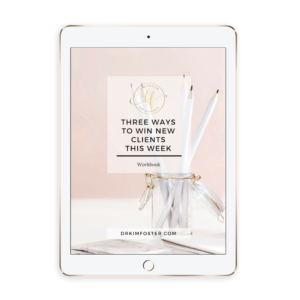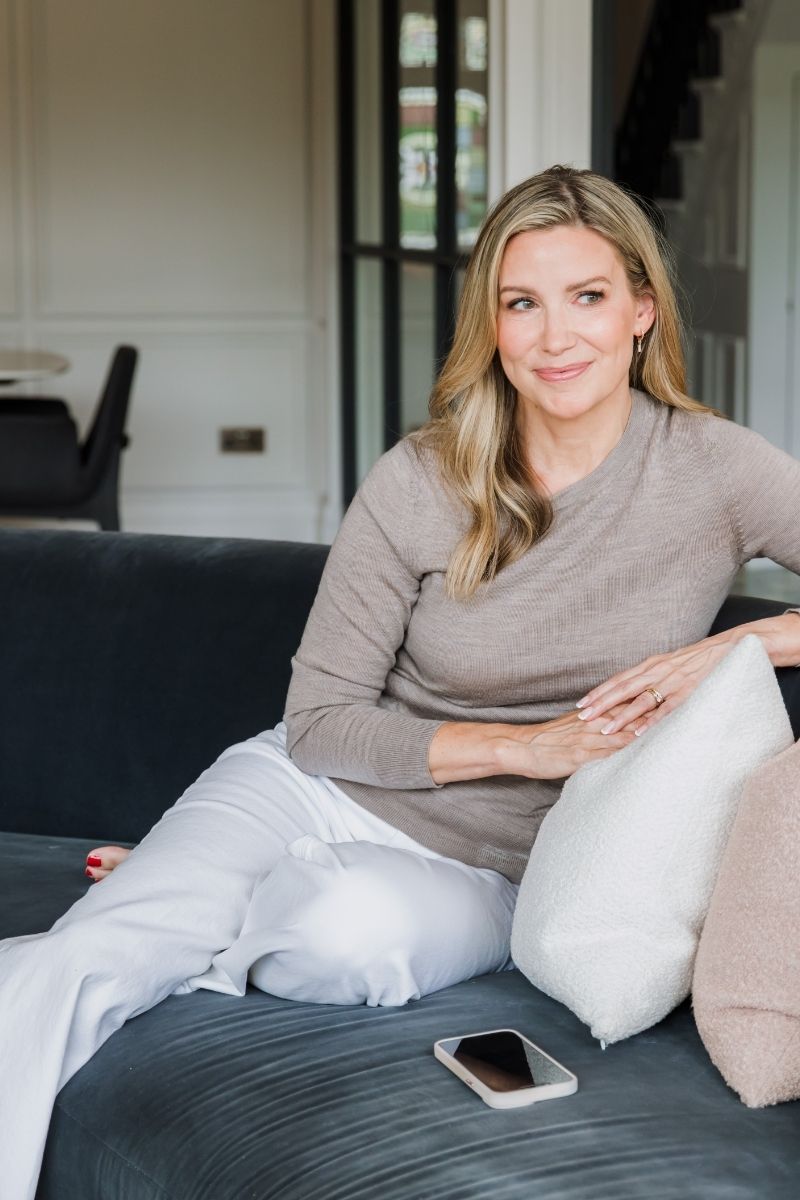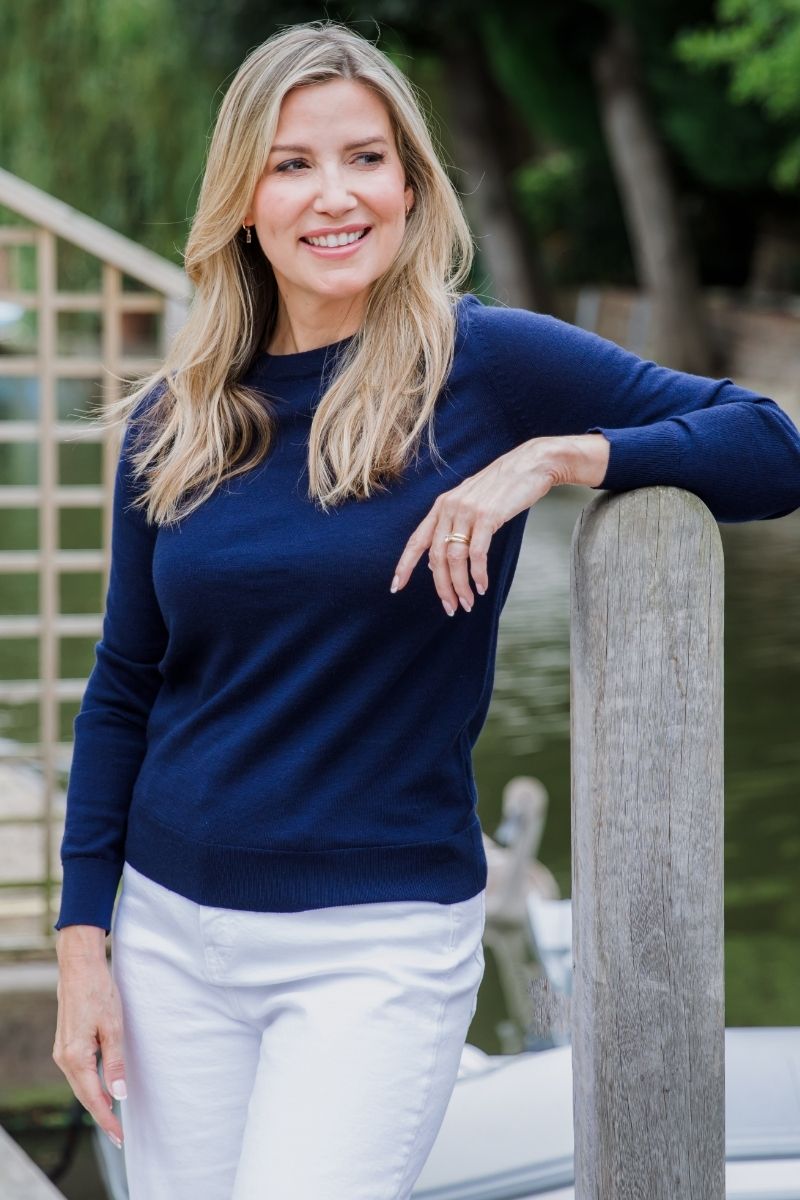
Can Pinterest really help you get more clients as a health or wellness coach? Yes, absolutely.
In today’s post (and podcast episode) I explain why Pinterest is so useful as a marketing strategy, and give you a breakdown of how you can use this powerful platform as a secret weapon in your business.
I reveal my three top Pinterest strategies to grow your traffic on automatic. Pinterest has been really instrumental for me, personally, growing my email list, my traffic, and my business, and in this episode I’m going to give you some strategies for taking advantage of this powerful — and under-used — platform.
Here’s what we’re going to cover in this post (and the corresponding podcast episode):
- 3 Pinterest strategies to grow your traffic on automatic
- why Pinterest is so beneficial for health coaches
- how to create a profile that attracts your ideal client
- how to curate keyword-rich Pinterest boards
- how to easily implement Pinterest SEO
So let’s dive in!
By the way, if you’d prefer to listen to this topic than read it…you can do that right here:
If you watched my masterclass on growing your email list, you’ve heard me talk about how instrumental Pinterest has been for me in terms of growing my list and generating traffic to my website.
And I happen to believe that Pinterest is one of the most under-rated yet effective marketing platforms available right now. And not nearly enough wellness coaches are using it to grow their businesses.
If you want to grow your traffic and audience on automatic, Pinterest can help you do exactly that.
When I started using Pinterest strategically, I was able to see a huge spike in my website traffic and my email list began to grow exponentially.
And this new surge in traffic and email subscribers also grew my business — it wasn’t just a vanity metrics thing. Within a year of implementing a Pinterest strategy, I had tripled my revenue.
So I want to help you make Pinterest your secret weapon, just like it is for me.
Today I’m going to share three crucial Pinterest strategies that will help you grow your business.
STRATEGY #1: CREATE A PROFILE THAT ATTRACTS YOUR IDEAL CLIENT
You have probably been thinking of Pinterest, up to now, as a place where you can save things that are of interest to YOU. And this is a common mistake, so you’re not alone if this has been your approach.
But when you begin using Pinterest strategically inside your business, as a marketing platform, you need to tailor your profile and your content to your target audience.
Now, of course, this means you need to know who your target audience, or your ideal client avatar, actually is. And if you don’t have a really clear grasp on that, then you’ve got some work to do first.
For help in choosing your niche, which is part of knowing who your ideal client is—which is basically the people you help, and what you help them with —go back and listen to episode #4 where I give you a whole step-by-step process for choosing the right niche for your business.
So once you know exactly who your ideal client is, what she likes, what she’s struggling with, what she wants help with…then you start curating your Pinterest account with this ideal client in mind. You need to create an account that is specifically designed to attract the RIGHT people.
Here’s how to do that.
First, take a look at your bio. Here, you’ll want to set up four things:
- A very brief bio statement that describes in plain language who you help, how you help them.
- Keywords in your profile name.
- An opportunity for people to opt-in.
- A good photo of you.
Let’s take a closer look at each of these pieces:
1. Your bio statement
The most important thing about your bio is to not make it all about you. In fact, it should mostly be about how you can help other people, specifically your ideal client.
An easy formula is: I help [x] achieve Y.
For example: I help moms get in shape with easy yoga routines.
Or
I help corporate women with meal planning so they can eat healthy every day with ease.
2. Keywords in your profile name.
When you add keywords into your profile name, your profile has a higher likelihood of coming up when somebody searches for one of those keywords on Pinterest, or even Google for that matter.
3. A call to action to opt-in
Back to your bio statement, which describes to your profile visitors what you do, next you want to give them an opportunity to opt-in with a good call to action. Ideally, this is directing them to some kind of freebie, like a PDF download or some kind of free training.
4. Profile Photo
Finally, let’s discuss about your profile photo. I always recommend professional photos — you’re going to need them for your website anyway, and it’s a really important part of your branding, but if you don’t have professional portraits just yet, you still want a good-quality photo for your Pinterest profile. So get out in some natural light and have someone take a friendly, smiling photo of you.
STRATEGY #2: CURATE KEYWORD-RICH BOARDS FOR YOUR IDEAL CLIENT
Pinterest is a search engine, so this is critical. And not only is Pinterest a search engine, but it is also a research tool. Even if they’re not ready to buy, your ideal clients come to it looking for useful pins they can save for when they are ready.
You need to plan for quality rather than quantity! Adding to Pinterest’s own value is a proven way to boost Pinterest growth.
Pinterest users are not only shoppers and those who browse for fun, but they also come looking for inspiration, as well as DIY shortcuts and tips. If your primary goal is traffic referral, relevant inspiration and DIY information are areas your need to include.
When creating keyword-rich boards, your focus should be on providing all the resources they need – not just your pins, but pins that contain links to other products or people they need.
So think about your niche and your ideal client. What kinds of things is she looking for?
Let’s say she’s a mom looking for healthy ways to feed her family and stay fit, you could create a board for “healthy family recipes” and one that you call “easy workouts for busy moms”. And you could maybe even break down that recipes ones into “healthy breakfast recipes” and “easy, healthy on-the-go lunch ideas” or even “healthy school lunches”.
See what I’m saying?
You want to create a collection of boards that are targeted to your ideal client, so when she lands on your profile or one of your boards, she’ll see a rich resource of content and valuable pins that look like they were designed just for her — because they were!
So I want you to brainstorm brand-relevant and Pinterest-relevant topics, and then create a collection of boards that represents all the key aspects of your brand, your core topics.
Overall, I recommend having at least 20 on-brand boards on your profile.
Now if you currently have off-brand boards on your profile, you might want to consider either getting rid of those boards, or making them private, if they’re just for your own personal use. What you don’t want to do is create confusion for a Pinterest user who lands on your profile becuase she was searching for healthy recipes, and then finds a bunch of unrelated boards that have to do with lawn maintenance and travel tips for backpacking through Asia. You know what I mean?
STRATEGY #3: IMPLEMENT PINTEREST SEO
Once you’ve created a great, on-brand profile on Pinterest, and curated your board collection, it’s time to take a deeper dive into SEO.
Now, I know the term SEO can be intimidating and confusing for many people, and maybe it is for you, but stay with me here.
What you need to know is that a common mistake people make is to lump Pinterest in with other social media platforms, like Instagram and Facebook. But the truth is, Pinterest is not a social media platform. What it is is a search engine. Much like Google. Or YouTube, for that matter.
So, because Pinterest is a search engine, It’s important to implement Search Engine Optimization, or SEO. And I don’t want you to get freaked out by that, all that SEO means is that you’re optimizing your content so it shows up as one of the first results when someone searches for soemthing in particular.
Pinterest, just like google, uses an algorithm to rank its pins in an order they think will be most useful to their users.
And it’s in Pinterest’s best interest to use an algorithm that shows people content they’ll love and find relevant.
So what this means for you, as a Pinterest marketer, is that you need to do what you can to get Pinterest to rank your content in their feed, and as close to the top as possible.
So how do you go about doing this?
The first step is one I’ve already touched on, which is to create boards your ideal client wants to follow.
Again, remove any boards that are irrelevant to your ideal audience and add new boards that your ideal client would be searching for.
Next, add keyword-rich descriptions to your boards.
The board description is a valuable spot to add keywords that your ideal client would be searching for on Pinterest.
And here’s the first reason you might want to do that: your boards themselves can rank on Google.
Meaning, if someone types a phrase into Google, your actual PINTEREST BOARD could appear as a top search result, which is an amazing thing.
That’s the kind of thing that could lead to a a whole lot of new website visitors, subscribers, and followers.
Also, on Pinterest itself, Pinterest users can sort their search result specifically for “boards”
By having a keyword-rich board description you’re making it much more likely that your board will actually rank in those results.
The next thing to do, to improve your SEO, is to create great descriptions for your pins–the ones that are coming directly from your website. This may be the most important step. Your pins are the central piece to your Pinterest strategy, so they deserve the most effort.
So on every pin you share from your website, write a keyword-rich description. Optimize that description with keywords.
The best keywords are what’s known as long-tail keyword. That’s a keyword that’s at least 2-3 words long. And that phrase, or long-tail keyword, should be something that people will search for.
So choose strategic, long-tail keywords, and then incorporate them into the description of your pin in a conversational way — meaning, how people would actually talk.
Use the types of phrases that your audience is searching for. And the best way to figure out what people are searching for is to head over to Pinterest itself, type in your general word (like “yoga”) and then Pinterest will suggest a bunch of additional phrases and words that go with that word.
Now what about hashtags?
Hashtags are a good idea on Pinterest. So at the end of your keyword-rich description, include 4 or 5 hashtags. The way the algorithm works currently is that hashtags will give your pin a boost in the first day or so, but then the effect quickly wears off. After that, it’s SEO and keywords that will give your pins longevity. And that longevity is one of the best things about Pinterest. Pins can have a super long half-life on Pinterest, unlike most other social media platforms, where posts basically disappear from people’s feeds after a very short time.
In fact, one of my most popular pins is from over two years ago, and it still drives traffic to my site — and to my email list — every single day. It’s incredible.
Okay, so there you have it, my 3 tips for getting started with a really strategic approach to using Pinterest for your wellness business.
Of course there’s a lot more to Pinterest than these three tips, but if you implement them, they will give you a really good start.
I hope you’ve enjoyed this, and I really hope you are starting to see Pinterest in a whole new way — like I say, I really consider Pinterest to be a secret weapon for entrepreneurs, especially for health & wellness coaches, so I’d love to see you get out there and start using this platform to help you grow your traffic, build your email list, and ultimately get you more paying clients.
Resources:
3 Ways To Win New Clients This Week

Ready to plan your next steps in your wellness business? LET’S HOP ON A CONSULTATION CALL! LEARN MORE HERE
Subscribe Links:





